Our Main Man Mark travelled over to the good ol’ USA recently to swing a leg over Specialized’s fastest and lightest full suspension XC mountain bike
The recent Specialized Summer Camp (held at a bike park/ski resort in New Jersey of all places) opened up with a rundown of all the world class XC races that their flagship XC race bike had won over the years. The list was very, very long.

There’s no doubting the provenance of this model – since it’s introduction in 2003, the bike has won Olympic medals and there’s no higher accolade than that really. Basically it’s a proven platform for going exceptionally fast if you have the legs for it. For the 2018 version, we were prepared for the usual tweaks to geometry and spec that an annual press launch typically provides, but what we were not prepared for was the stripping out of the most fundamentally Specialized system that has seemingly been at the heart of not just this bike but the entire Specialized range of full suspension bikes.
Yes, the FSR bit that has been part of the Epic for 15 years is now officially, gone.
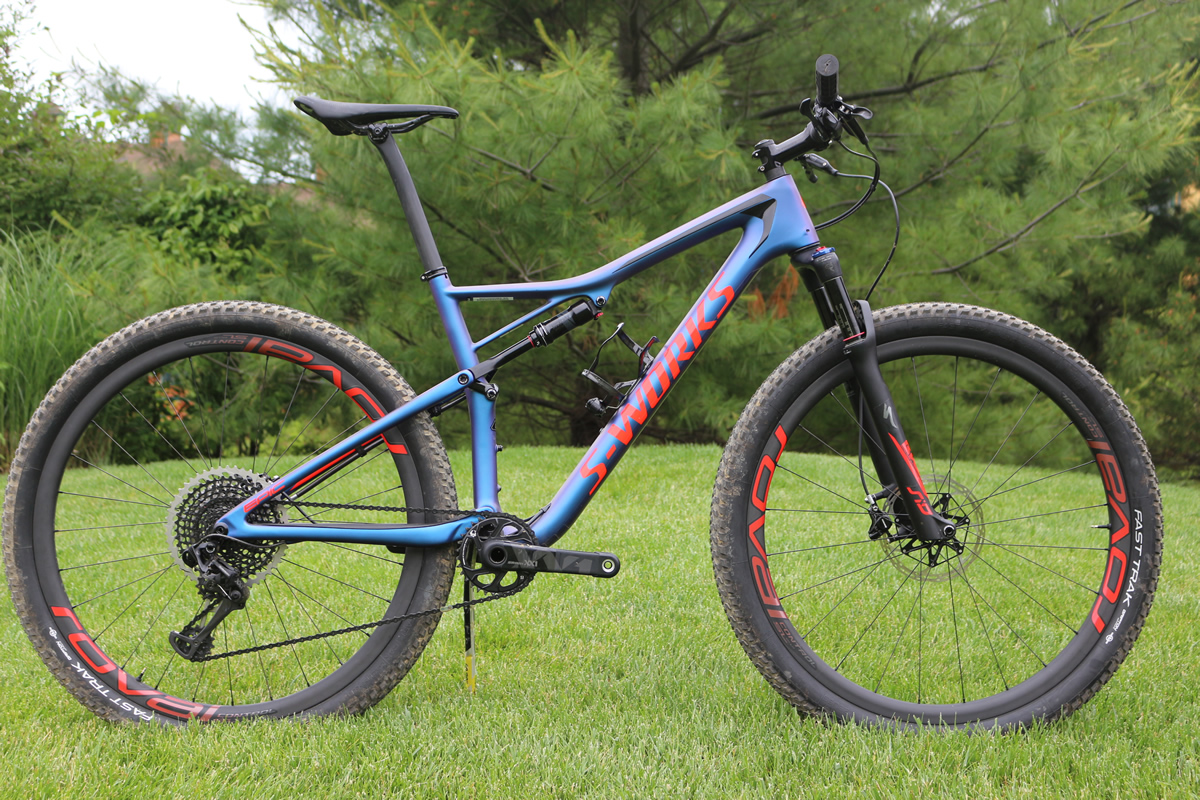
The flagship XC race platform of the Specialized range is now a single pivot bike, rather than the FSR four-bar linkage that’s adorned every full suspension Epic before this one, or every Specialized full suspension bike for that matter.
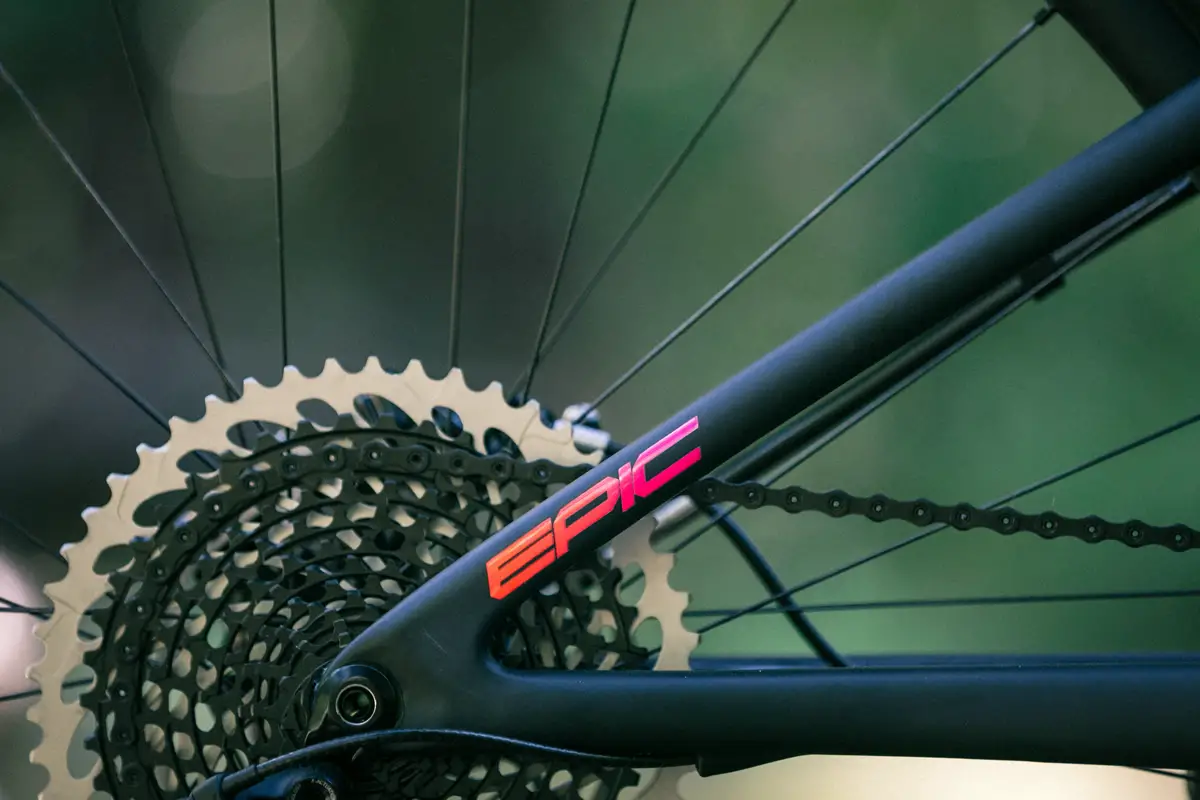
For comparison, here’s last year’s FSR rear on the Epic (below).
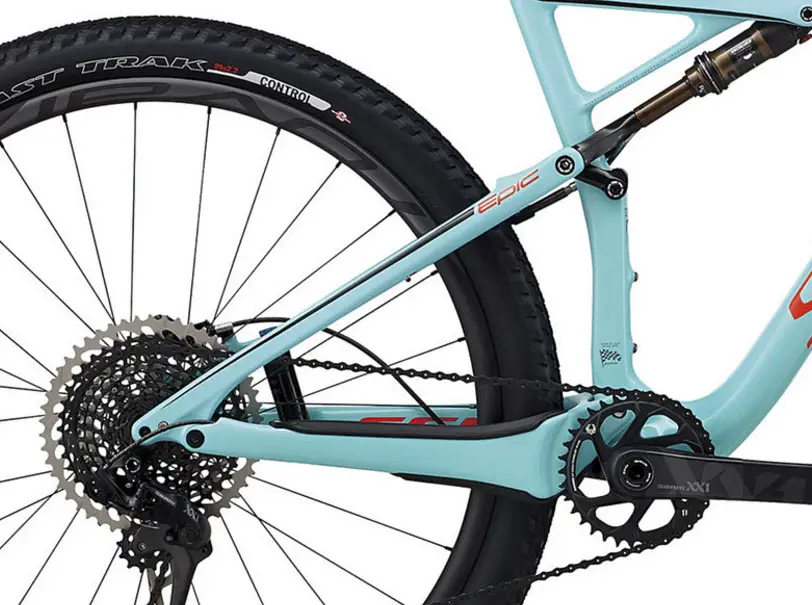
Why? Well, principally to shave off weight – and not just a little weight either. By moving to a single pivot rear triangle, Specialized has lost an incredible 345 grams off the carbon frame of the S-Works model. That’s almost a third of the old frame weight. But more impressive is the weight saving on the alloy Comp/Expert model. There’s a massive 525 grams shaved off the frame weight of the lower range alloy framed models (there will be no alloy models available in the UK however). Those numbers are enormous when you’re talking about bikes that weigh around the 10kg / 22lb range.
Now, in lieu of the FSR linkages, the stays have an element of flex designed into them to allow them the necessary movement through the shock stroke. All this means that on the S-Works model the total bike weight is now staggeringly low at just 21lbs (9.45kg). If you can’t go fast on this bike then you are out of excuses and you really do need to skip the pie course and lunch.
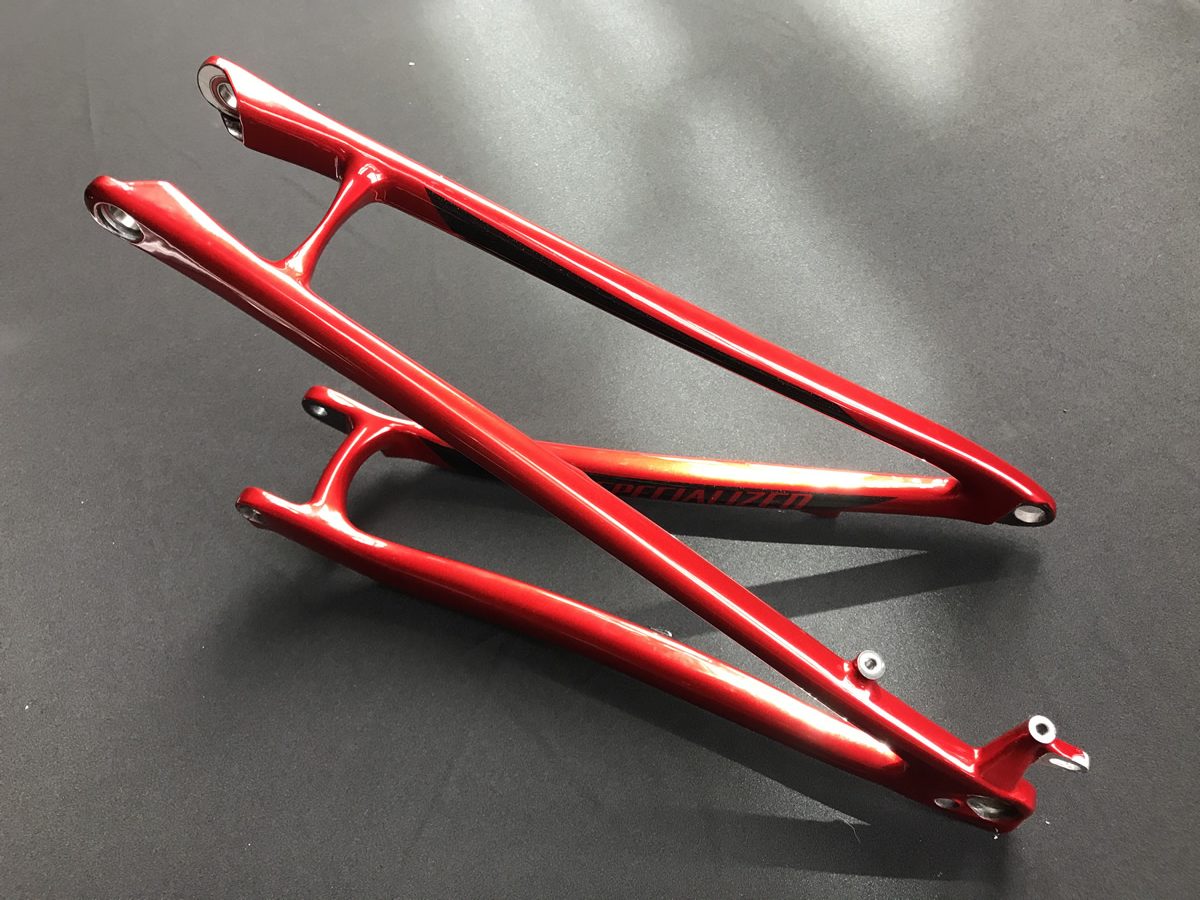
Geometry Changes
The lack of FSR is not the end of the big alterations. Specialized has developed this model to deal with what it refers to as the new, modern age of XC race courses that are featuring ever more technical and steep sections. So they have slackened the head angle this year by a whopping 1.25 degrees to 69.5°. And in order to stop the wheelbase from disappearing out of sight as a consequence they have brought the fork offset back by 9mm compared to the off the shelf equivalent fork to just 42mm, compared to the usual 51mm fork offset used on most other 29er bikes (although this is just 4mm further back on last year’s SID BRAIN fork).
Because a slacker head angle with less fork offset is going to play havoc with the established handling Specialized has also lengthened the reach of the bike by 10mm while at the same time fitting shorter stems (90mm on the large pictured) – all in an attempt to make sure that the bike’s handling on the ups hasn’t been compromised too much by the adjustments to make it work much better on the downs. It’s amazing the chain reaction that you set off in the handling department by simply slackening the headtube, and there’s a whole lot of tweaking happened as a result across the board to make sure that this bike still maintains it’s standing as one of the world’s most sought after XC race platforms.

Other geometry insights include a 74.5° seat tube and a shortened chainstay length of 438mm. Well I say ‘shortened’, but that’s down by 1mm on last year’s numbers. But every mm counts, right? Of course, the whole thing has been Boosted to 148mm wide at the rear and 110mm at the front. The rim width on the Roval wheels that come with the S-Works model have been beefed up too – 25mm wide rims (that’s the new Roval Control SL wheelset, which is up from 22mm last year) further strengthens Specialized’s argument that they are trying to beef up the technical handling on this bike. Move down from the S-works model however, and you are back on the 22mm standards of yore (well, last year).
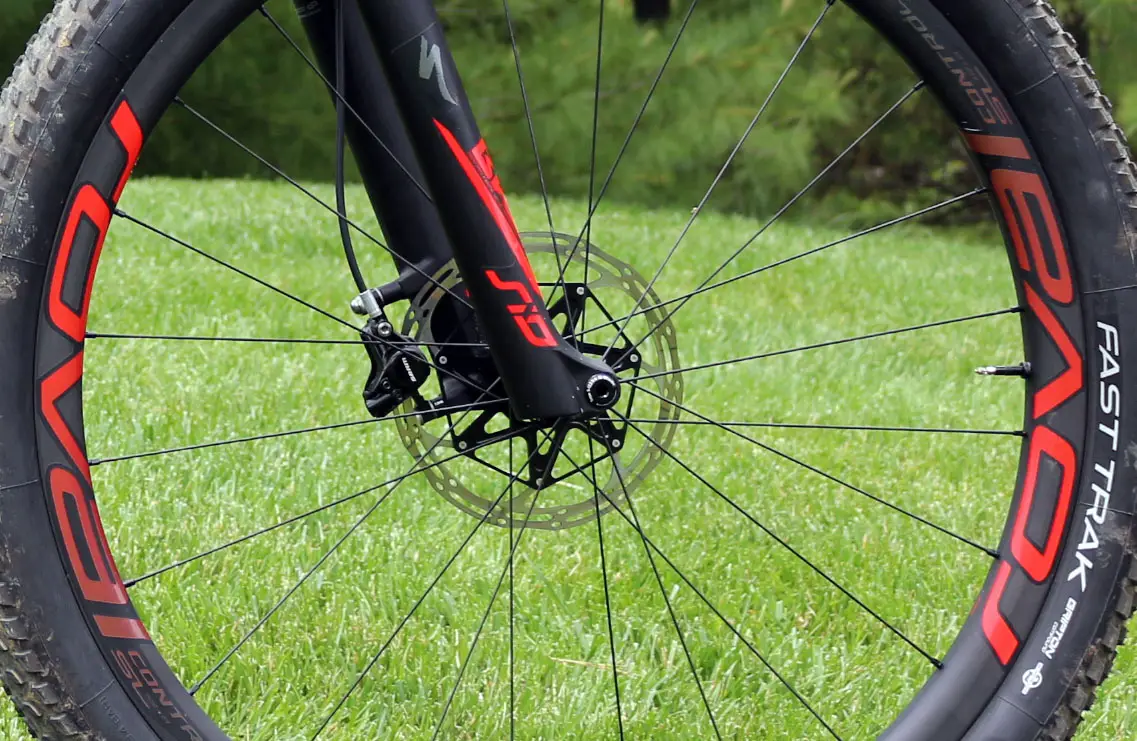
Frame
Specialized claims to have created a process of laying up the carbon (Specialized S-Works FACT 12m carbon on the S-works model – FACT 11m on the Comp Carbon) in their frames in such a way that the stiffness rating of each frame is identical across all the size options. And by stiff they mean very stiff. This means that just because you are super tall and need to ride the gate sized XL that won’t mean that your ride will be less stiff due to longer, wibblier (that’s a word) tubes. Specialized claim their aim is to make the XL has the same ride characteristics as the small carbon frame.
Frames across the range are all internally routed but it’s down at the bottom bracket that we spotted a more significant diversion from the norm. The BB is now threaded this year. No more press-fit BB’s. We salute that change.

BRAIN 2.0
The fork is, as it has been recently, a proprietary collaboration with Rockshox. The 100mm SID fork contains the Specialized BRAIN sensor that locks out the fork until it hits something. The inertia valve then opens and the fork performs it’s duties. It’s essentially an automatic lockout and is designed to stay locked out to rider input but react to trail input. Kind of.. if the hit comes from above then stay locked… if it comes from below then open up the valves and let the plushness flow.
The rear shock has similarly incorporated the BRAIN technology by mounting the BRAIN sensor close to the rear axle and connecting it to the shock via a hydraulic hose. But where previous shocks have been a collaboration with FOX this year they have gone full RockShox. Fox are out and Rockshox is in all the way. And together they have modified the BRAIN sensor tech on the shock. The sensor is now mounted outboard of the rear axle instead of inboard and mounted on the chainstay.
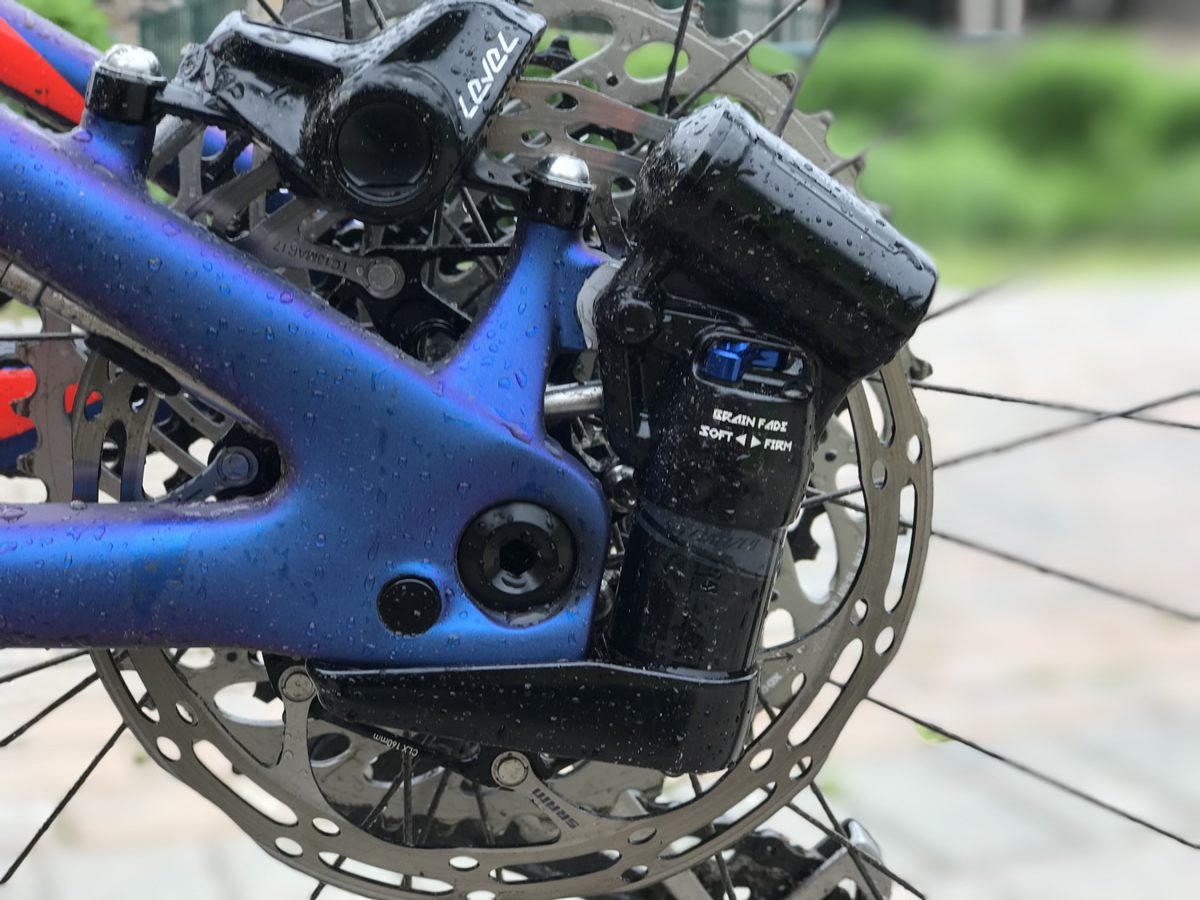
The reason is to make the sensor more sensitive by essentially mounting it at the end of a longer lever; ie the chainstay. This means for a given impact the inertia sensor will move by a greater amount, which allows the BRAIN sensor to react to more subtle trail impacts. Specialized also claims this means the BRAIN sensor is more tuneable.
The hose routing has also been tweaked for the better too. Instead of the hose from the shock to the BRAIN looping out and around the shock mount it now passes through it, thus keeping the hose straighter and shorter, which all supposedly keeps the oil flow and so called oil turbulence to a minimum. It also means there’s no more frame rub as the shock moves about, so if the science doesn’t make any sense to you then just be reassured that your precious paintwork is going to be kept in better shape.
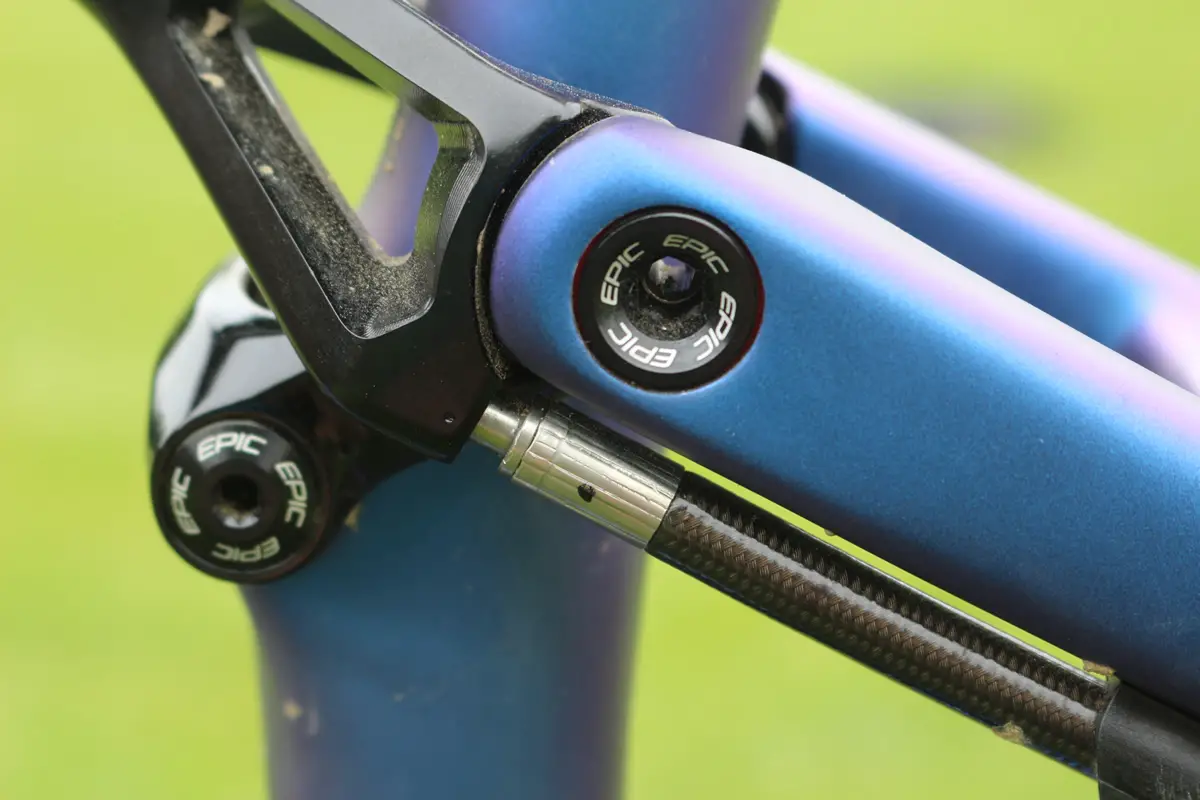
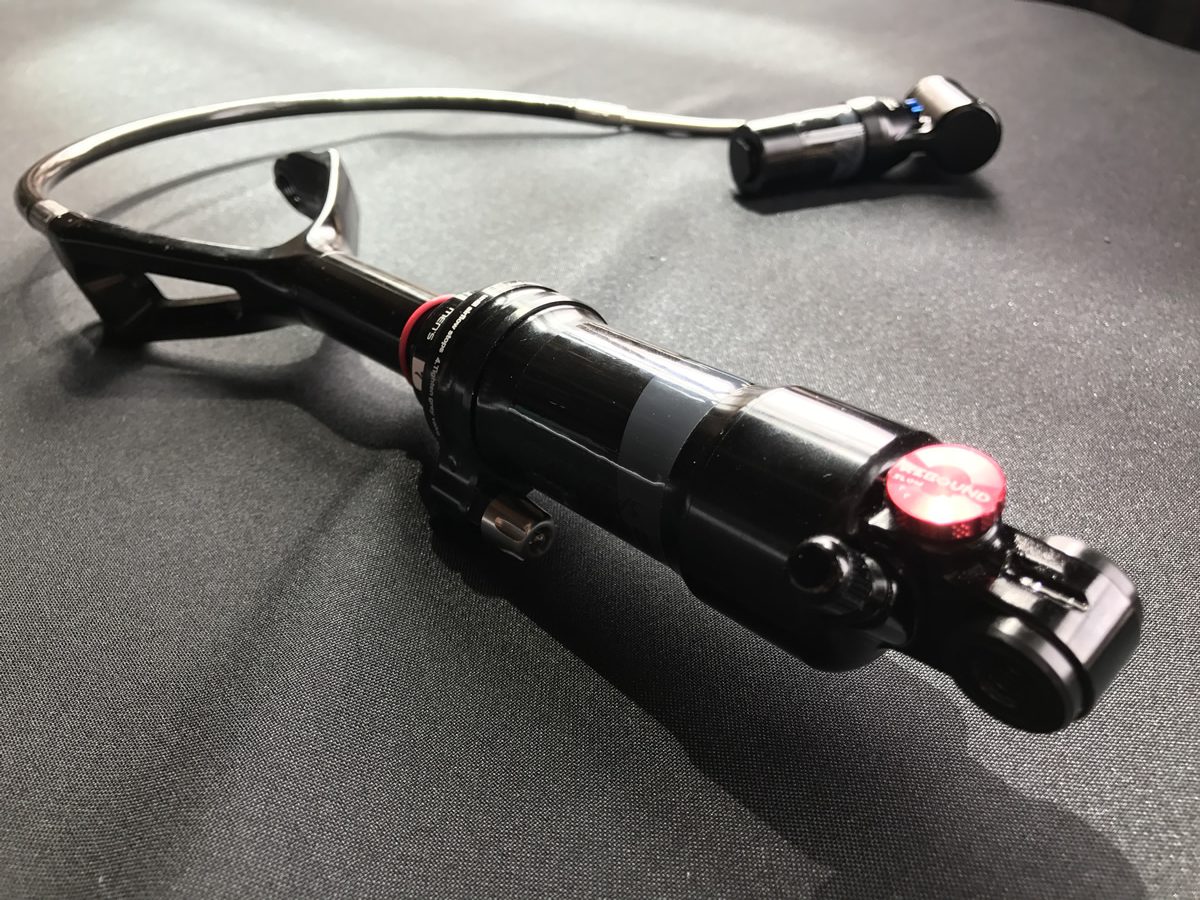
A Dropper post on an XC race bike?
Also, surprisingly for a thoroughbred XC race machine the seat tube is dropper post compatible, and not just Command post compatible but all types, including full length 150mm posts. Why have a dropper post on a super lightweight race bike? Again, it’s to satisfy the Specialized requirement that it’s race bikes will be able to deal with courses that go down as well as up. It’s all about the speed on all parts of the course these days and if you hadn’t noticed already, most top flight XC racers really do know how to handle a bike when it gets a bit gravitationally challenged. None of the complete bikes in the range actually come with a dropper post though, which is presumably to keep the headline weight as low as possible – but it’s now there as an optional upgrade.
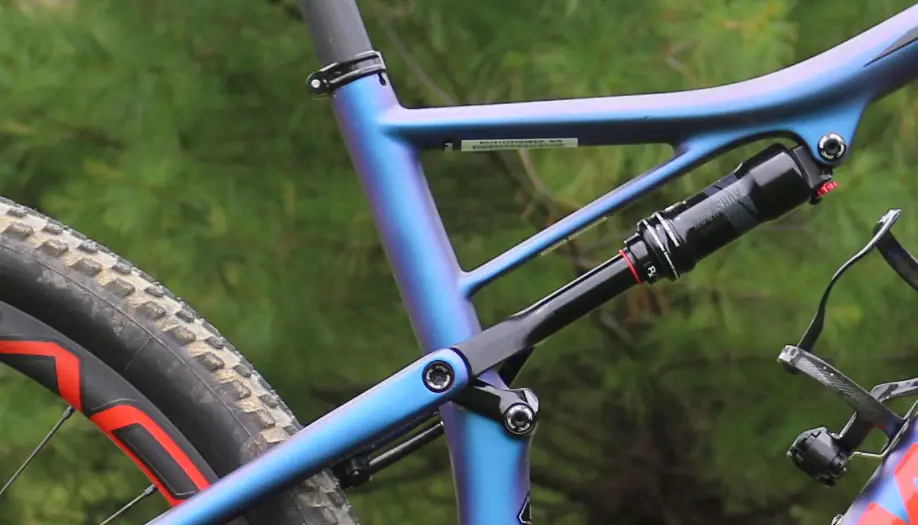
Ladies and Gentlemen
Specialized claims that its data shows that as far as frame geometries go, what women want is generally no different to what men want. And so the basic frameset is identical no matter if you stand or sit to pee. The women’s models come with tweaked contact points only and custom tuned fork and shock. The frame is the same though although sizing stops at large for the women’s range (No XL). And on the subject of framesets, you can buy the Epic frameset on it’s own if you want to roll your own kit.
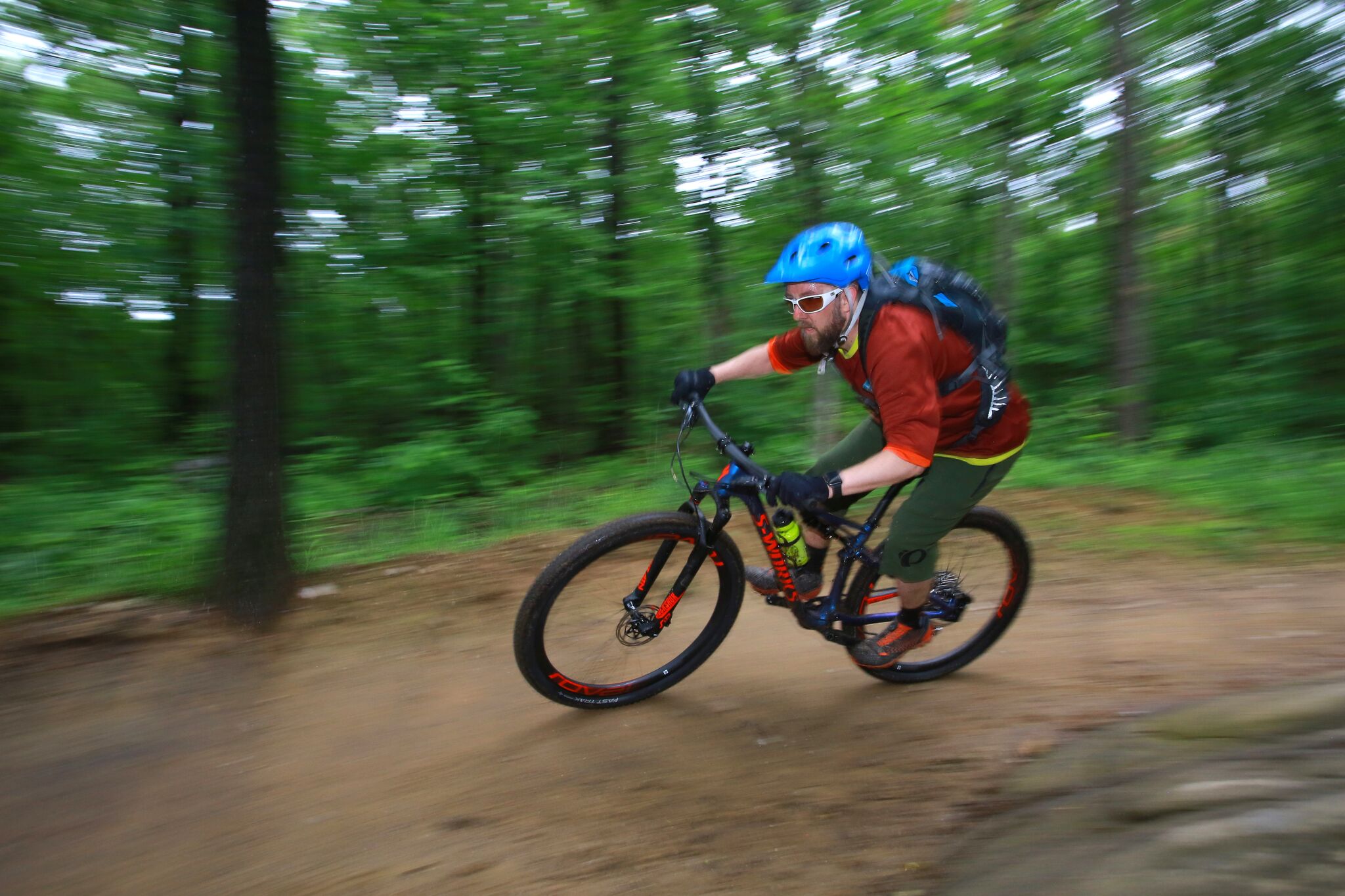
Overall
Sometimes press trips for new year ranges from brands reveal what we tend to call BNG changes. BNG stands for Bold New Graphics and is sarcastically referring to minor, uninspiring changes that amount to new paint jobs. Then there are launches that really move the evolution of a range on a step or two. The changes Specialized have made this year to their flag ship race bike definitely fall into the latter category. They’ve not simply improved an existing platform but fundamentally approached it from a new position.
The new Epic represents an acknowledgement that racing has moved on and that XC bikes need to be more than just light and good at climbing but also capable of handling the types of riding that once were extreme but now are ‘typical’. The brief is simple but notoriously difficult to hit – a bike that is light & fast; can climb like a goat but also hit technical descents without missing a beat. Our first impressions are positive and we are looking forward to spending more time in a future test to see if it lives up to that.
Pricing
You know this is going to make you wince right? It is after all a thoroughbred race platform with a lot of tech built in. So, if you are sitting down we’ll take it from the top.
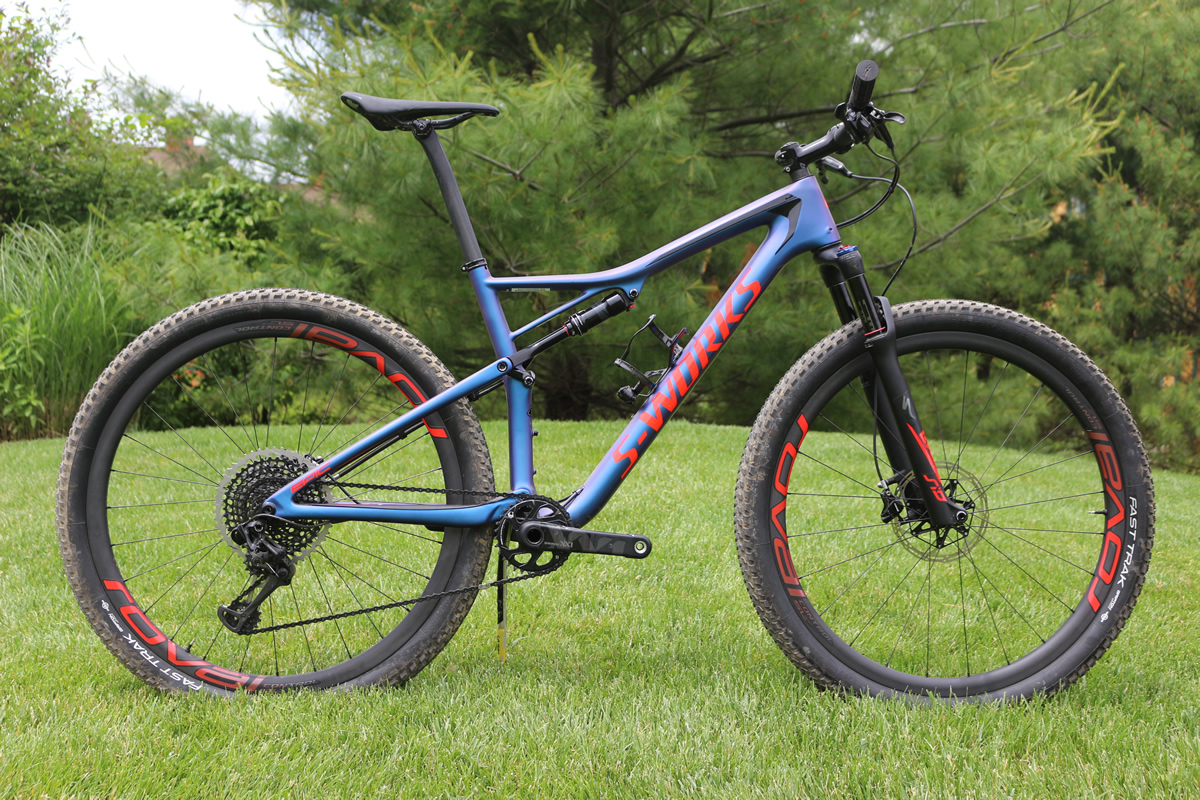
This right here is as good as it gets. The crème de la crème. The top of the pops. The king of the jungle. S-Works has has always stood for the very best, and this bike is no exception. Equipped with the very best grade of carbon (that be the FACT 12m), the S-Works Epic frame is as light as it gets. Paired to a World Cup RockShox SID fork, carbon rims, seatpost, bars and a SRAM Eagle XX1 drivetrain, this is a bike that laughs in the face of your supposed ‘upgrade plans’.
Check out our First Look at the Specialized Epic HT
2018 Specialized S-Works Epic XX1 Eagle: £8500
- FRAME // S-Works FACT 12m carbon, XC geometry, threaded BB, 12x148mm rear spacing, internal cable routing, 100mm travel.
- REAR SHOCK // RockShox/Specialized Micro Brain shock w/ Spike Valve, AUTOSAG, 51x257mm
- FORK // RockShox SID WC Brain 29, Top-Adjust Brain Fade Adjust, Solo Air, tapered carbon crown/steerer, 15x110mm Maxle® Stealth thru-axle, 100mm of travel, 42mm offset
- STEM // S-Works SL, alloy, titanium bolts, 6-degree rise
- HANDLEBARS // S-Works Carbon Mini Rise, 6-degree upsweep, 8-degree backsweep, 10mm rise, 720mm, 31.8mm
- GRIPS // Specialized Sip Grip, half-waffle, S/M: regular thickness, L/XL: XL thickness
- FRONT BRAKE // SRAM Level Ultimate, hydraulic disc, carbon lever, titanium hardware, organic pads, 160/180mm rotor
- REAR BRAKE // SRAM Level Ultimate, hydraulic disc, carbon lever, titanium hardware, organic pads, 160mm rotor
- REAR DERAILLEUR // SRAM XX1 Eagle™, 12-speed
- SHIFT LEVERS // SRAM XX1 Eagle, trigger, 12-speed
- CASSETTE // SRAM 1295 Eagle, 12-speed, 10-50t
- CHAIN // SRAM XX1 Eagle, 12-speed w/ PowerLock
- CRANKSET // SRAM XX1 Eagle, Boost™ 148, 170/175mm crankarm, 24mm spindle
- CHAINRINGS // Alloy Eagle 32T
- BOTTOM BRACKET // SRAM GXP
- RIMS // Roval Control SL, hookless carbon, 25mm internal width, tubelessready
- FRONT HUB // Roval Alloy, DT Swiss internals, 15x110mm spacing, torque caps, 24h
- REAR HUB // Roval Alloy, DT Swiss 240 internals, 12x148mm thru-axle, 54t quick
- FRONT TIRE //Fast Trak, GRIPTON compound, 29×2.3″, 60 TPI, Aramid folding bead, 2Bliss Ready
- REAR TIRE // Fast Trak, GRIPTON compound, 29×2.1″, 60 TPI, Aramid folding bead, 2Bliss Ready
- SADDLE // Body Geometry S-Works Phenom, carbon rails, 143mm
- SEATPOST // S-Works FACT carbon, 10mm setback, 30.9mm
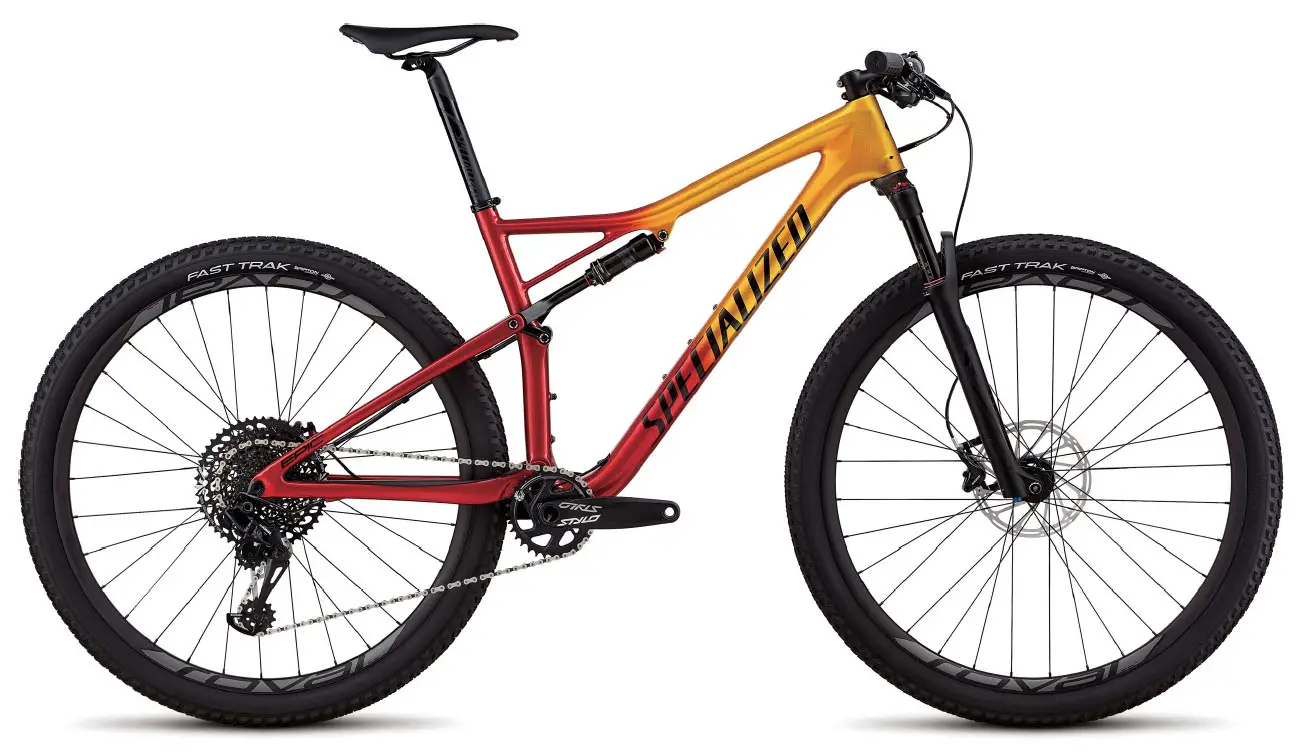
The Epic Expert comes in carbon but with a slightly less sophisticated than the S-Works model, using FACT 11m carbon instead. It is fully BRAIN’d front and rear, although you get an alloy steerer on the fork rather than carbon. Drivetrain is still 12-speed with that huge 10-50t cassette, but it’s of the SRAM GX variety, rather than the XX1 type.
2018 Specialized Epic Carbon Expert: £4800
- FRAME // Specialized FACT 11m, full carbon frame, XC Geometry, threaded BB,12x148mm rear spacing, internal cable routing, 100mm of travel
- REAR SHOCK // RockShox/Specialized Micro Brain shock w/ Spike Valve, AUTOSAG, 51x257mm
- FORK // RockShox SID 29 w/ Brain, tapered alloy steerer, bottom-adjust Brain Fade, Solo Air, 110x15mm Maxle® Stealth thru-axle, 100mm of travel,42mm offset,
- STEM // Specialized XC, 3D-forged alloy, 4-bolt, 6-degree rise
- HANDLEBARS // Specialized Mini-rise, 7050 alloy, 8-degree backsweep, 6-degree upsweep, 10mm rise, 720mm width, 31.8mm clamp
- GRIPS // Specialized Sip Grip, half-waffle, S/M: regular thickness, L/XL: XL thickness
- FRONT BRAKE // SRAM Level TL, hydraulic disc, organic pads, 160/180mm rotor
- REAR BRAKE // SRAM Level TL, hydraulic disc, organic pads, 160 rotor
- REAR DERAILLEUR // SRAM GX Eagle, 12-speed
- SHIFT LEVERS // SRAM GX Eagle, trigger, 12-speed
- CASSETTE // SRAM GX Eagle, 12-speed, 10-50t
- CHAIN // SRAM GX Eagle, 12-speed w/ PowerLink
- CRANKSET // Truvativ Stylo, 6K alloy, Boost™ 148, 24mm spindle
- CHAINRINGS // Alloy Eagle 32T
- BOTTOM BRACKET // SRAM GXP
- RIMS // Roval Control Carbon, 22mm internal width, tubeless-ready
- FRONT HUB // Specialized disc, sealed cartridge bearing, 15x110mm spacing, torque caps, 32h
- REAR HUB // Specialized disc, sealed cartridge bearings, 12x148mm spacing, 32h
- FRONT TIRE // Fast Trak, GRIPTON compound, 29×2.3″, 60 TPI, Aramid folding bead, 2Bliss Ready
- REAR TIRE // Fast Trak, GRIPTON compound, 29×2.1″, 60 TPI, Aramid folding bead, 2Bliss Ready
- SADDLE // Body Geometry Phenom Comp, Adaptive Edge design, Hollow Cr-Mo rails, 143mm
- SEATPOST // Specialized, alloy, single bolt, 21mm offset, 30.9mm
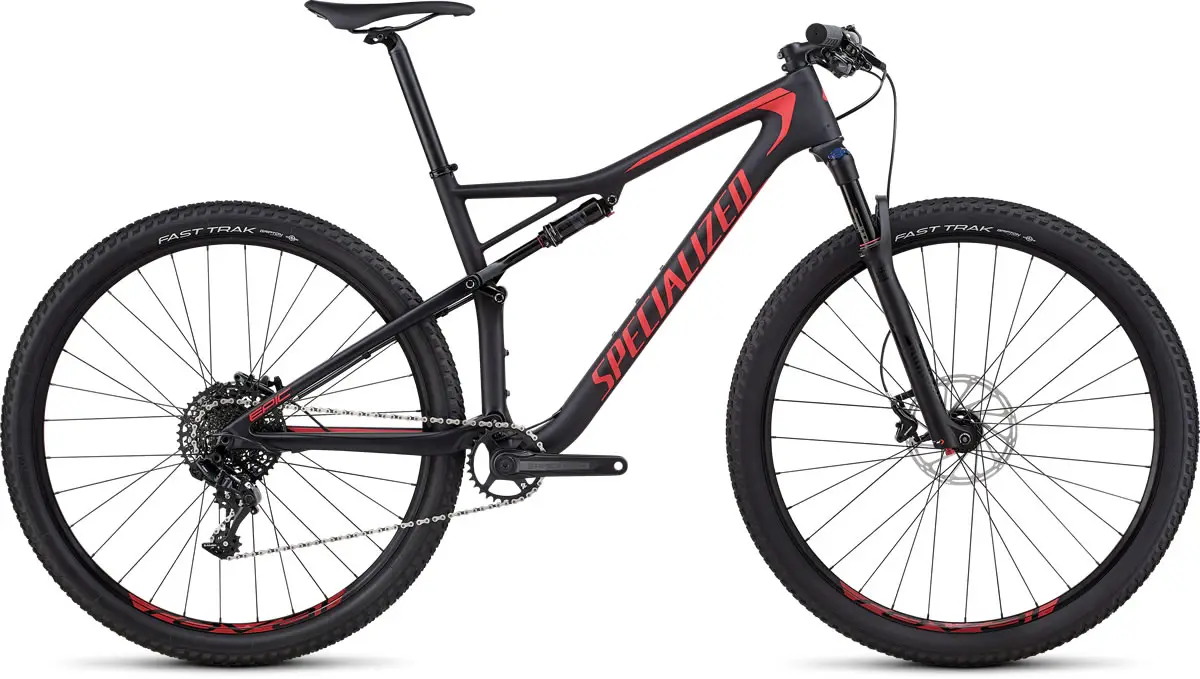
The Comp is the UK entry level bike and comes with a carbon frame (The FACT 11m variety). There is an alloy version of the Epic but at the time of writing there’s no plans by Specialized UK to offer that in the UK. For us in Blighty, it’s carbon all the way down. The BRAIN features are restricted to the rear shock on this model. The Fork has no BRAIN.
2018 Specialized Epic Comp Carbon: £3500
- FRAME // Specialized FACT 11m, full carbon frame, XC Geometry, threaded BB,12x148mm rear spacing, internal cable routing, 100mm of travel
- REAR SHOCK // RockShox/Specialized Micro Brain shock w/ Spike Valve, AUTOSAG, 51x257mm
- FORK // RockShox Reba RL 29, Solo Air, compression / rebound adjust,
- STEM // Specialized XC, 3D-forged alloy, 4-bolt, 6-degree rise
- HANDLEBARS // Specialized Mini-rise, 6000 alloy, 8-degree backsweep, 6-degree upsweep, 10mm rise, 720mm width, 31.8mm clamp
- GRIPS // Specialized Sip Grip, half-waffle, S/M: regular thickness, L/XL: XL thickness
- FRONT BRAKE // SRAM Level TL, hydraulic disc, organic pads, 160/180mm rotor
- REAR BRAKE // SRAM Level TL, hydraulic disc, organic pads, 160 rotor
- REAR DERAILLEUR // SRAM GX, trigger, 11-speed
- SHIFT LEVERS // SRAM GX, trigger, 11-speed
- CASSETTE // SRAM XG 1150, 11-speed, 10-42t
- CHAIN // KMC X11, 11-speed w/ Missing Link™
- CRANKSET // Race Face Aeffect, 6000 Series alloy
- CHAINRINGS // Steel 30t
- BOTTOM BRACKET // Threaded BB, 24mm spindle
- RIMS // Roval Control 29, hookless alloy, 22mm internal width, tubeless-ready
- FRONT HUB // Specialized disc, sealed cartridge bearing, 15x110mm spacing, torquecaps, 32h
- REAR HUB // Specialized disc, sealed cartridge bearings, 12x148mm spacing, 32h
- FRONT TIRE // Fast Trak, GRIPTON compound, 29×2.3″, 60 TPI, Aramid folding bead, 2Bliss Ready
- REAR TIRE // Fast Trak, GRIPTON compound, 29×2.1″, 60 TPI, Aramid folding bead, 2Bliss Ready
- SADDLE // Body Geometry Phenom Comp, Adaptive Edge design, Hollow Cr-Mo rails, 143mm
- SEATPOST // Specialized, alloy, single bolt, 21mm offset, 30.9mm
Sizing
The sizes are the same across all models. Get your numbers fix on here;
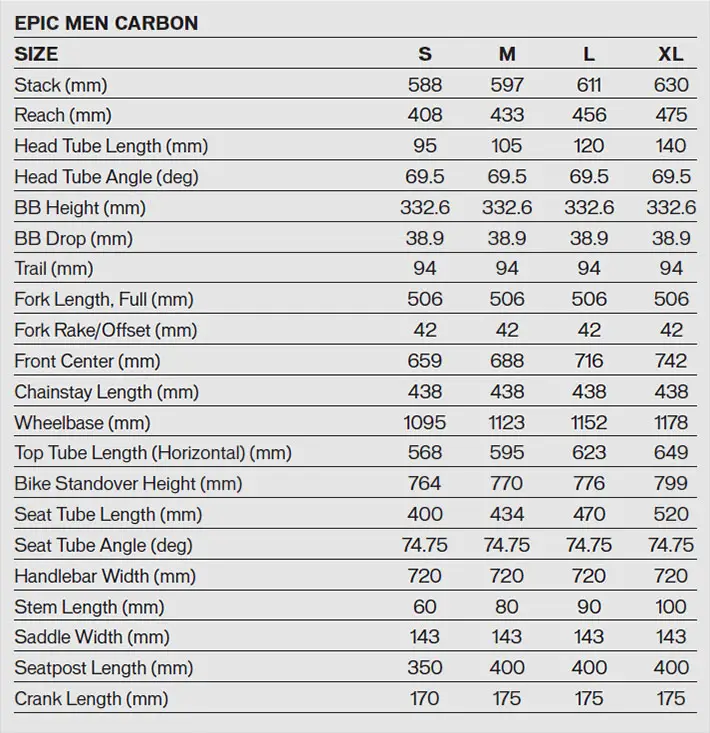
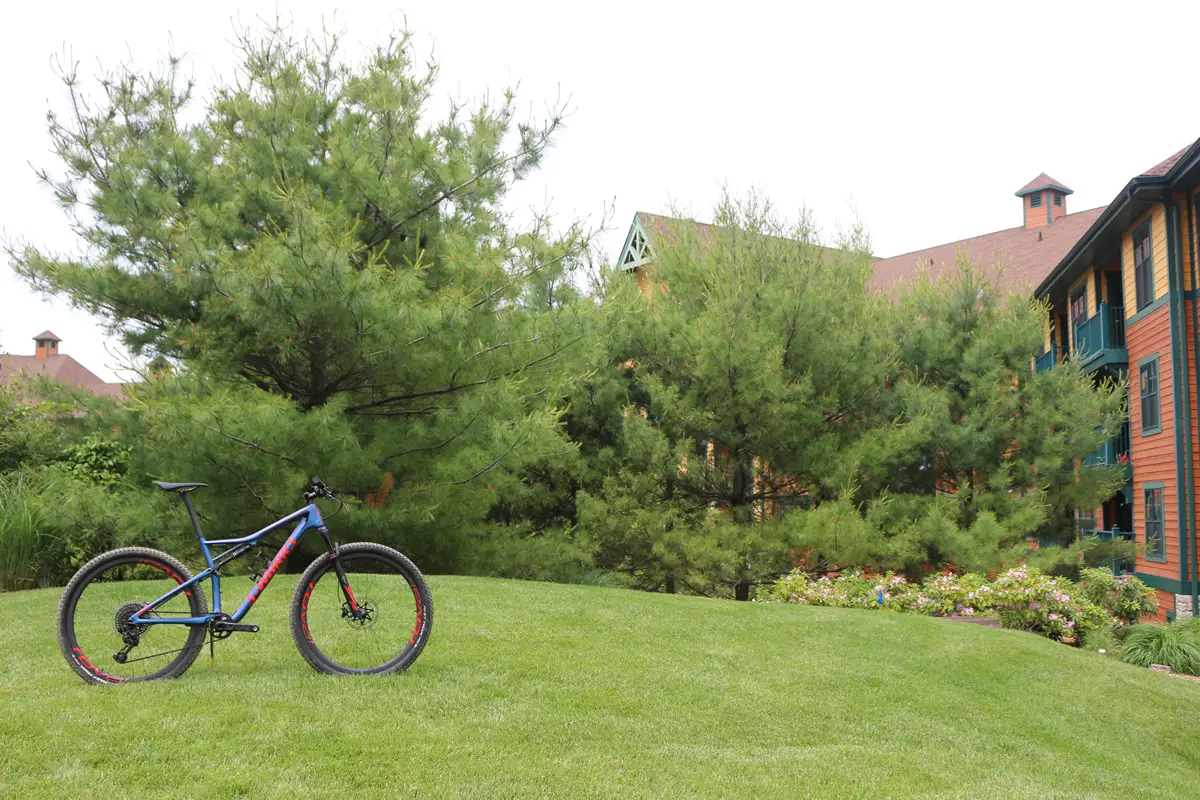
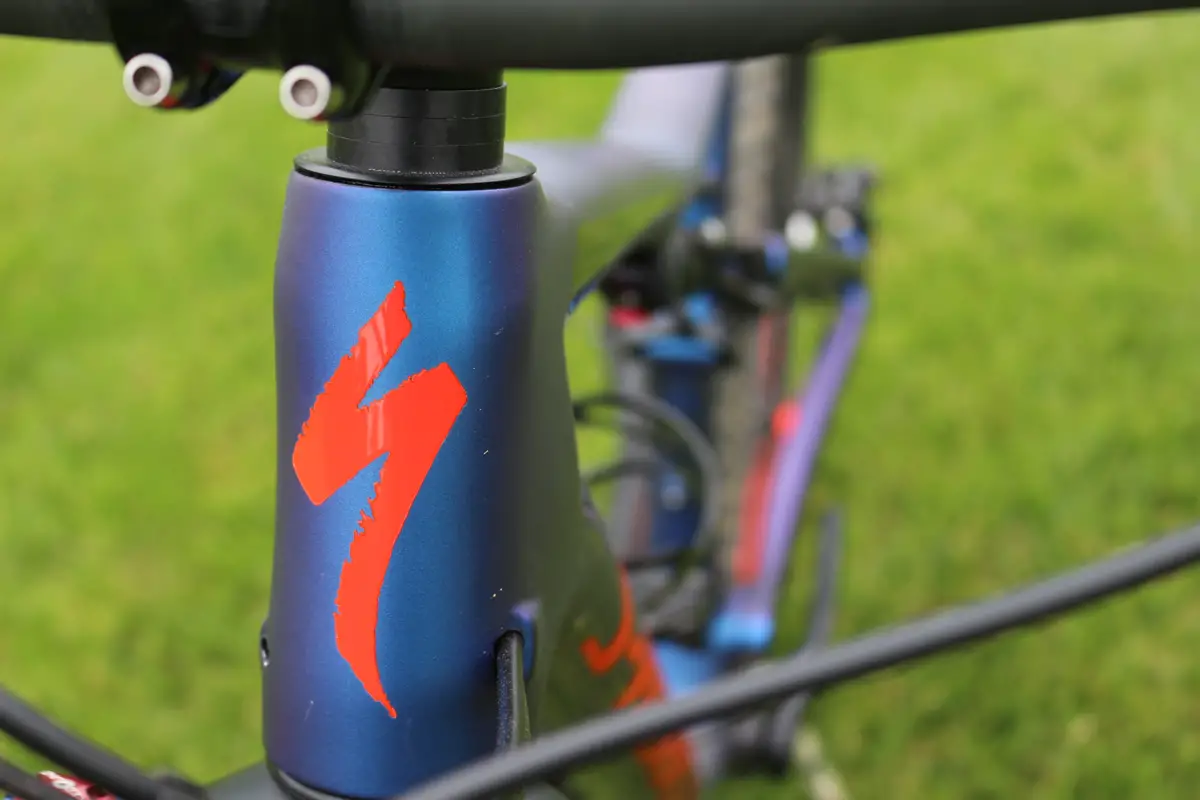
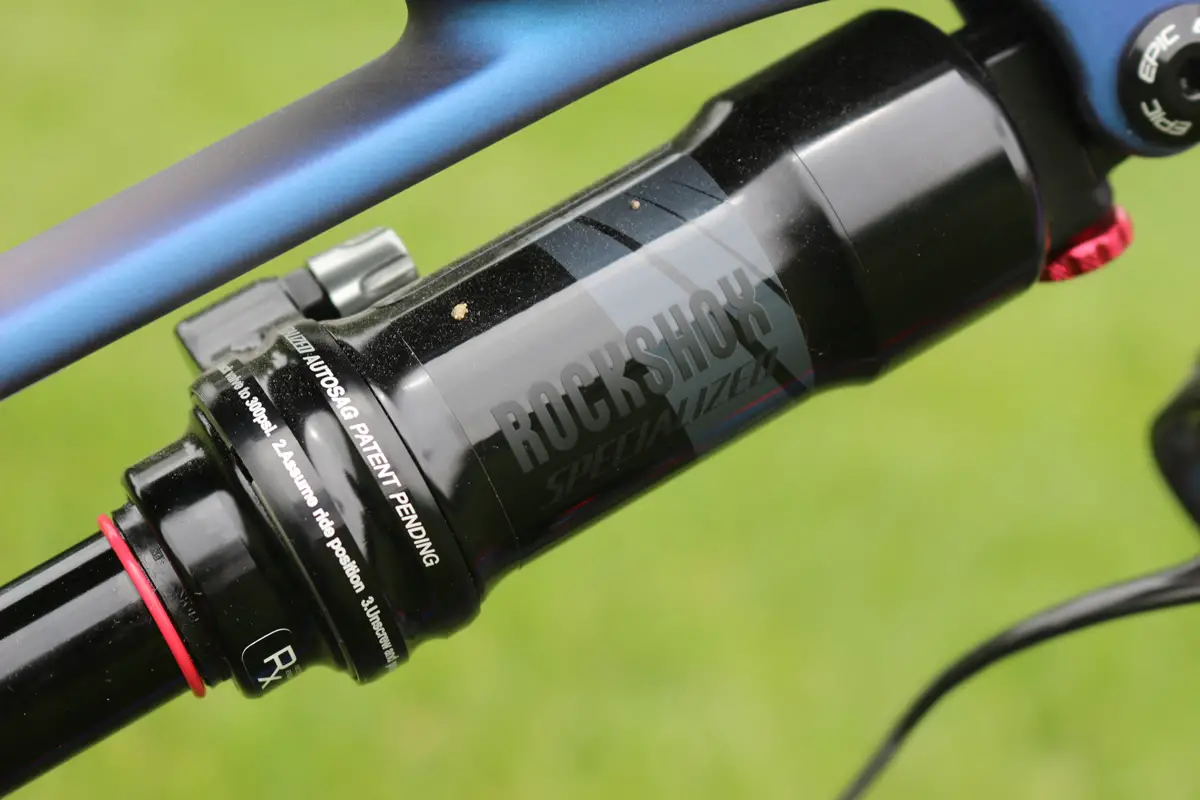

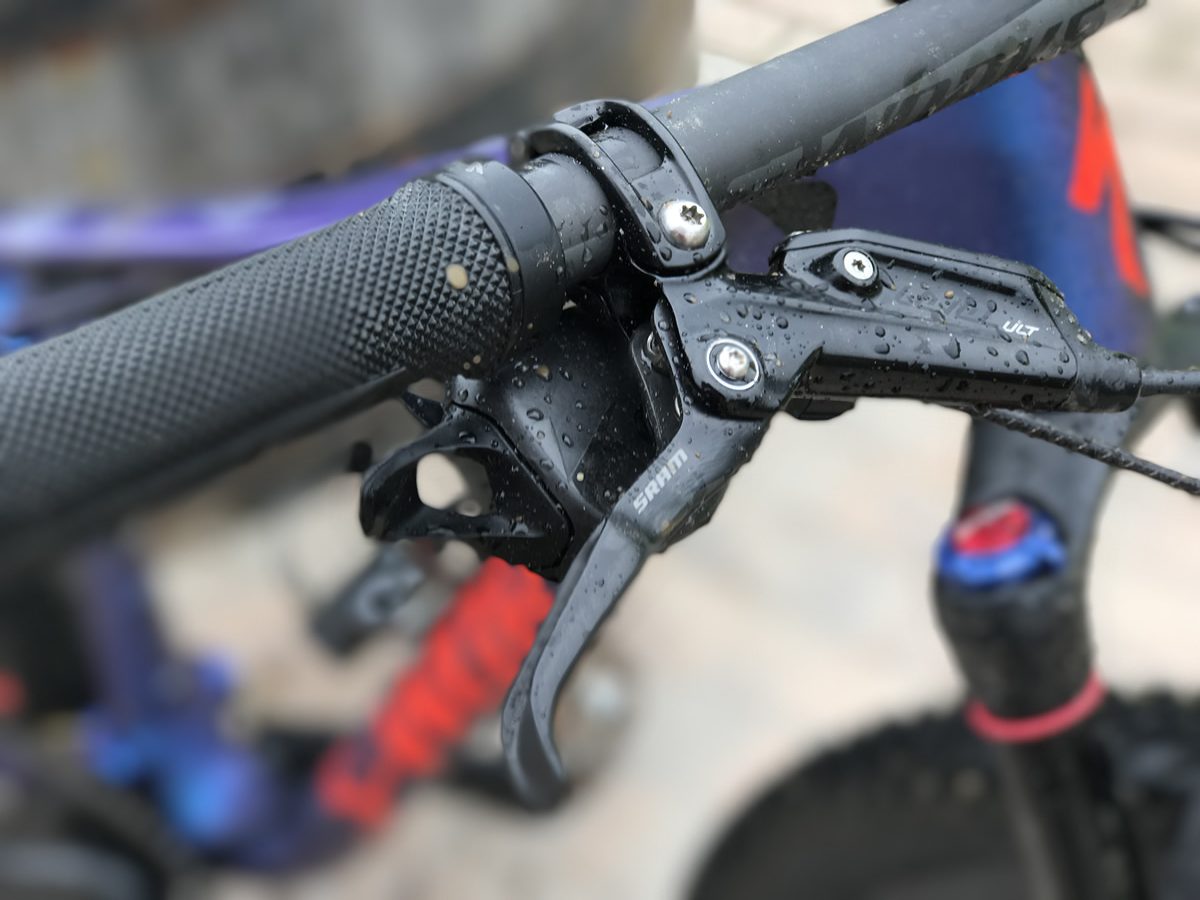

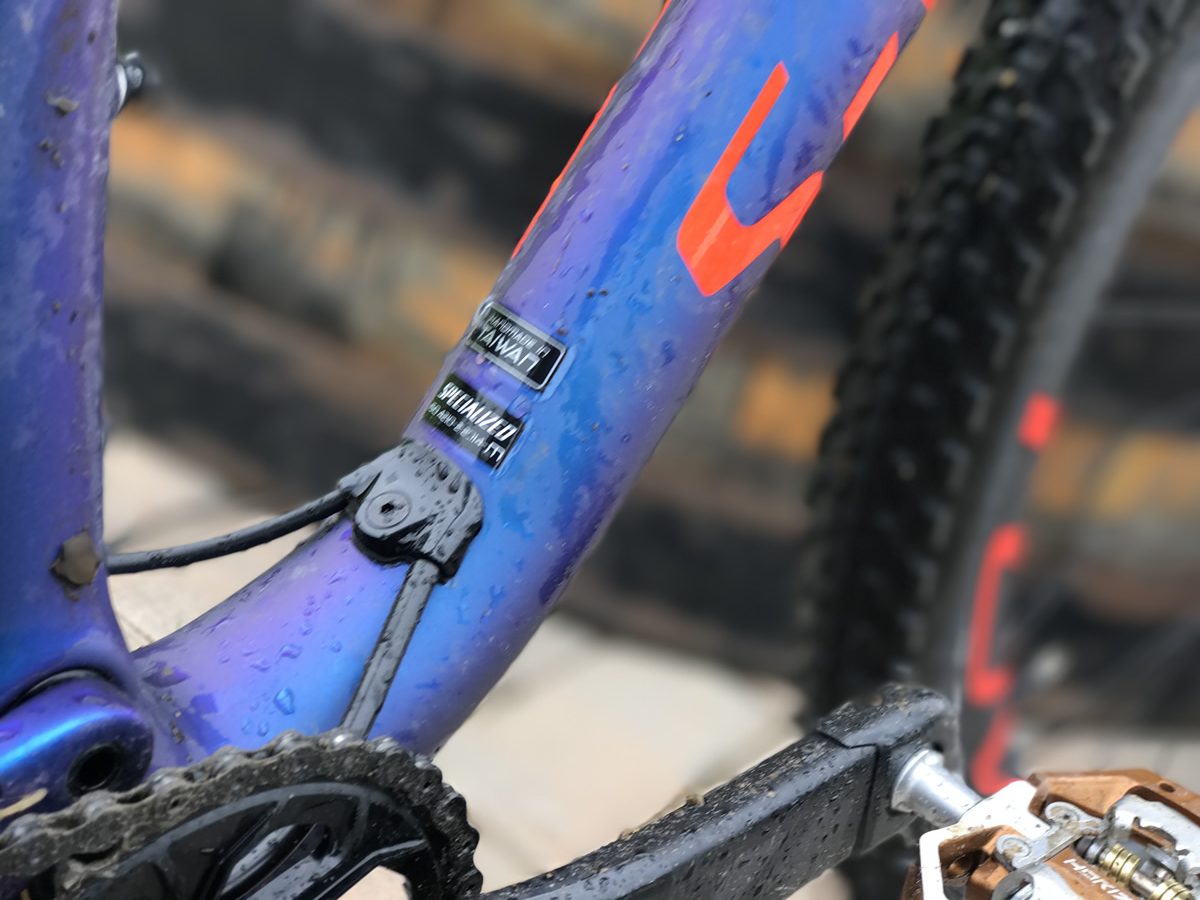
For more details on the rest of the range check out the Specialized website.
Disclosure
Flights, accommodation and hospitality for this press trip were provided by Specialized.
Comments (1)
Comments Closed


Lovely looking bikes.
But it makes absolutely no sense to increase both top tube length *and* stem length as you go up in sizes.
A 100mm stem on any MTB is nuts. The handling on a 60mm stem is going to be different. Increase the top tube a bit faster, but leave the stems the same length in each size.